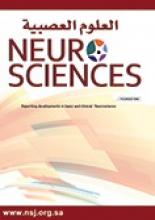Abstract
OBJECTIVE: To compare and analyze the clinical, radiological, and pathological features of solitary or/and multiple CNS tuberculomas (CNSTs).
METHODS: The study was conducted at Central South University, First Xiangya Hospital, Changsha, Hunan, China between 1998-2008. Forty-two subjects with diagnosed CNSTs were compared and analyzed by multiple or solitary lesions seen on enhanced MRI. The final diagnosis of tuberculomas was confirmed by histopathology.
RESULTS: From the 42 subjects, 64.3% multiple CNSTs were observed, out of which, 55.6% were with meningitis and 44.4% without meningitis. Of the CNSTs, solitary lesions were present in 35.7%, 80% of which were without meningeal involvement, and 20% with meningeal involvement. In multiple CNSTs, 55.6% were noncaseating granulomas, and 74.1% caseating granulomas with a solid center, while in solitary CNSTs, 80% were caseating granulomas with a solid center. For multiple lesions, temporal lobe, frontal lobe, cerebella, and brain stem were predilection sites. While for solitary lesions, apical lobe, and cerebellum were predilection sites. The histopathological features were the same in all multiple and solitary lesions.
CONCLUSION: Multiple CNSTs are more often associated with meningitis, while solitary CNSTs particularly occur with less or atypical clinical manifestation. Difference in the predilection sites between multiple and solitary CNSTs were observed.
- Copyright: © Neurosciences
Neurosciences is an Open Access journal and articles published are distributed under the terms of the Creative Commons Attribution-NonCommercial License (CC BY-NC). Readers may copy, distribute, and display the work for non-commercial purposes with the proper citation of the original work.






